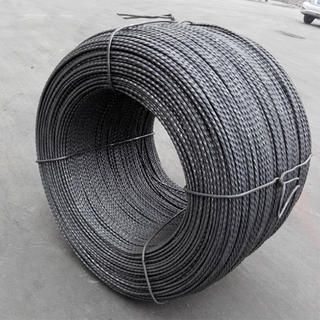Twisted Square Bar is a unique type of steel reinforcement characterized by its square cross-section and spiral-twisted design along the length of the bar. This twisting process enhances the bond strength between the bar and concrete, improving structural integrity in construction applications. The deformed surface created by the twisting pattern provides superior adhesion compared to smooth reinforcement bars, reducing slippage under stress.
Primarily used in reinforced concrete structures, twisted square bars are ideal for foundations, columns, and load-bearing walls where high tensile strength and optimal concrete grip are required. Their geometric shape and twisted profile distribute stresses more evenly, making them particularly effective in earthquake-resistant construction.
Manufactured from high-quality carbon steel, these bars offer excellent durability and can be customized in various sizes and twist pitches to meet specific engineering needs. While modern deformed round bars (rebar) have largely replaced them in many markets, twisted square bars remain valued in certain traditional and specialized construction projects. Their combination of mechanical performance and historical construction significance continues to make them relevant in select structural applications.
Creative Uses of Twisted Steel Bars in Home and Garden Design
Twisted steel bars offer a unique blend of strength and aesthetic appeal, making them ideal for innovative home and garden projects. Their distinctive spiral texture adds visual interest to functional elements like stair railings, gates, and trellises, creating a bold industrial-chic look. In outdoor spaces, twisted bars can be fashioned into striking garden sculptures, plant supports, or contemporary fencing that combines security with artistic flair. Interior designers often incorporate them into custom furniture bases, light fixtures, or room dividers for an edgy, modern vibe. The bars' durability makes them perfect for structural accents in pergolas or arched walkways, while their malleability allows for creative bending into organic shapes. For DIY enthusiasts, smaller twisted bars become unique drawer pulls, candle holders, or even wine racks. When powder-coated in vibrant colors or left with a raw metallic finish, these versatile bars elevate both rustic and minimalist designs, proving that industrial materials can bring warmth and character to residential spaces.
Hot Rolled vs Cold Rolled Twisted Square Bars – Which to Choose?
The choice between hot-rolled and cold-rolled twisted square bars depends on your project's structural and aesthetic requirements. Hot-rolled bars undergo shaping at high temperatures, resulting in a scaled surface with slightly rounded edges and greater flexibility for heavy-load applications like construction frames or industrial railings. Cold-rolled bars are processed at room temperature, delivering precise dimensions, smoother surfaces, and enhanced strength—ideal for architectural details or precision components where appearance matters. While hot-rolled bars are more cost-effective for large-scale projects, cold-rolled versions offer superior finish and tighter tolerances for decorative metalwork. Consider environmental factors too: hot-rolled bars may develop a rustic patina over time, whereas cold-rolled bars maintain a refined look. For artistic installations or indoor designs where detail is paramount, cold-rolled bars prevail, while hot-rolled variants excel in structural outdoor applications prioritizing durability over finish.
Twisted Square Bar Sizes and Available Custom Lengths
Twisted square bars come in standardized sizes ranging from slender 6mm profiles for delicate decor to robust 40mm bars for structural applications, with 10mm-20mm being most common for handrail and furniture projects. Manufacturers typically stock lengths of 3m, 6m, or 12m, but custom-cut options allow designers to specify exact measurements, minimizing waste for specialized installations. The twisting process can be applied to various thicknesses, with tighter spirals on thinner bars for intricate detail work and broader twists on heavier bars for bold architectural statements. Customization extends to twist density—some projects benefit from tightly wound coils for texture, while others use gradual spirals for subtle elegance. Suppliers often offer cutting, threading, or end-finishing services to prepare bars for specific joinery methods. Whether for mass production or one-off artistic pieces, the availability of tailored dimensions ensures seamless integration into any design scheme, from jewelry-scale creations to large-scale construction elements.


